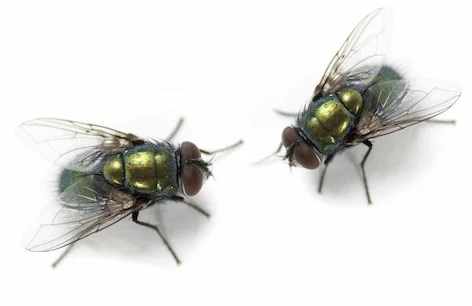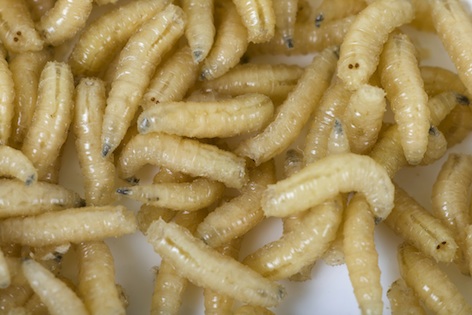Flies are insects.
They eat rotting things.
They pick up germs from rotting things.
They drop those germs where they land.
The germs can make us sick.
We think of them as pests, but flies are food for many creatures. Flies help clean up rotting things so they rot away faster.
What are flies?
House flies are insects. Instead of a skeleton inside their body, they have a hard outside and a soft inside. Flies have big eyes, called compound eyes, that see in many directions at once. There are many parts to a compound eye, and what the fly sees is a bit like a jigsaw. Flies can travel almost 9 km in a day, but they prefer to stay near the place where they hatched. There are many different kinds of fly.
How do flies breathe?
Insects do not have one part of the body that gets oxygen (such as lungs) or a system that takes the oxygen through the body (such as heart and blood). Instead they have a system called a tracheal system consisting of tubes that branch out and deliver oxygen to every part of the insect's body. The opening of the tube (the tracheae) is a tiny hole in the thorax or abdomen called a spiracle. This method is called diffusion, a system that means insects have to stay small. If they were big the oxygen wouldn't be able to diffuse through the whole body and keep their cells alive.
What do flies eat?
Flies don't have teeth, but have a mouth part called a proboscis, (say prob-oss-kus) shaped like a tube that sponges up liquids. If a food is solid, they bring up saliva (spit) onto it, and that softens it into a liquid.
The fly's proboscis is like a tube. ©Getty Images
They feed on decaying things such as rotten food scraps, animal poo, stuff that oozes out of sores. They fly off and wherever they land they poo and bring up saliva and then fly off again. In this way they spread germs to all the places they land, and these germs can pass on diseases to humans.
What is their life cycle?
Flies, being insects, have four stages in their life cycle:
1. Egg
A female fly lays about 500 eggs in about 4 days. The eggs are white, and are laid in something like garbage or animal poo.
Fly larvae are called maggots. ©Getty Images
2. Larva
After about 15 hours, out of each egg a larva hatches. The word for lots of them is larvae (say lah-vay). These are small white creatures called maggots. They begin eating whatever is around where the eggs were laid.
Maggots are often used as fishing bait. ©Getty Images
3. Pupa
After about 8 -10 days, the maggots move to a drier place ready for the next stage. A pupa (say pee-oo-puh) is a dark brown case that forms over the maggot. Inside the pupa the maggot changes into a fly.
4. Grown up Fly
Adult flies©Getty Images
After 3-6 days the pupa opens and an adult fly comes out. The fly lives for about 2 or 3 weeks.
Flies have big compound eyes. ©Getty Images
Keeping flies out of the home
To keep humans safe from disease, it is important to keep flies out of the house. The best way to keep flies under control is to keep the house clean. Keep the garbage tightly covered, don't leave food lying about, make sure the fridge closes tightly.
Flyscreens on windows and doors should not have holes in them that would let the flies come in. In some places, fly traps zap the flies with ultraviolet light to kill them.
It’s a good idea to get information from more than one source!
Watch a video with 10 amazing facts about the house fly:
https://www.youtube.com/watch?v=q4Reo-TFp14
Read more fly facts
https://a-z-animals.com/animals/fly/pictures/








